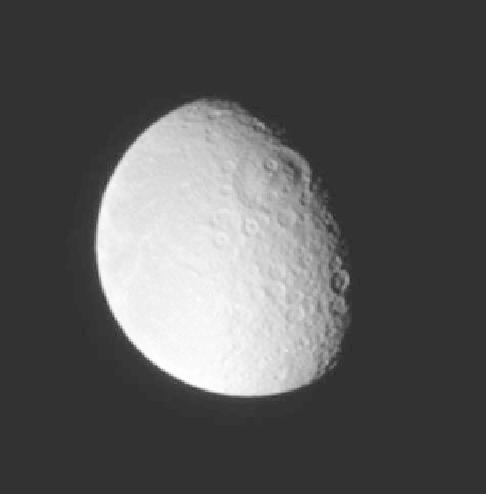Geology Reference
In-Depth Information
Figure 9.38. An oblique view of the western rim (arcuate ridge) of
Rhea
s Tirawa basin and its
floor to the right of the rim; the number
of superposed impacts on the rim and
floor indicates a surface that is
in impact equilibrium in which craters are destroyed at the same rate
as that of their formation (NASA Cassini PIA12856).
'
Figure 9.37. A Cassini image of Rhea
s leading hemisphere and the
360 km in diameter Tirawa basin near the terminator (NASA
PIA08976).
'
Figure 9.39. A mosaic of Iapetus showing prominent place names (from Roatsch et al.,
2009
).
that it is composed of more ice than that proposed for Rhea.
Since the satellite
'
s discovery in the seventeenth century,
the contrasts in surface brightness on Iapetus have been
recognized as distinctive in the Solar System. While the
leading hemisphere is extremely dark, the trailing hemi-
sphere and polar regions are very bright. Surface features
are dif
cult to see in the dark area (named Cassini Regio),
but craters are abundant, the largest of which is the 580 km




